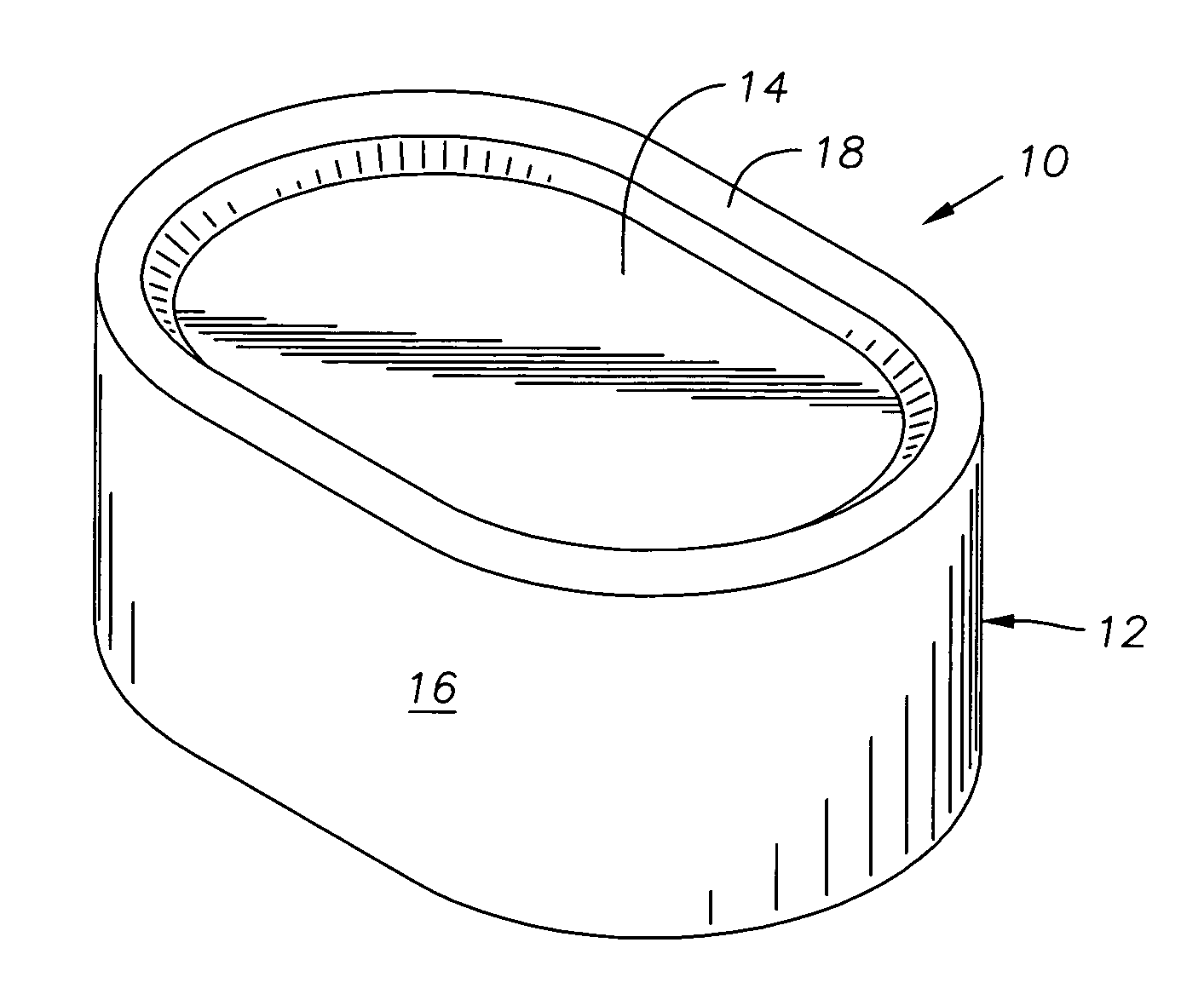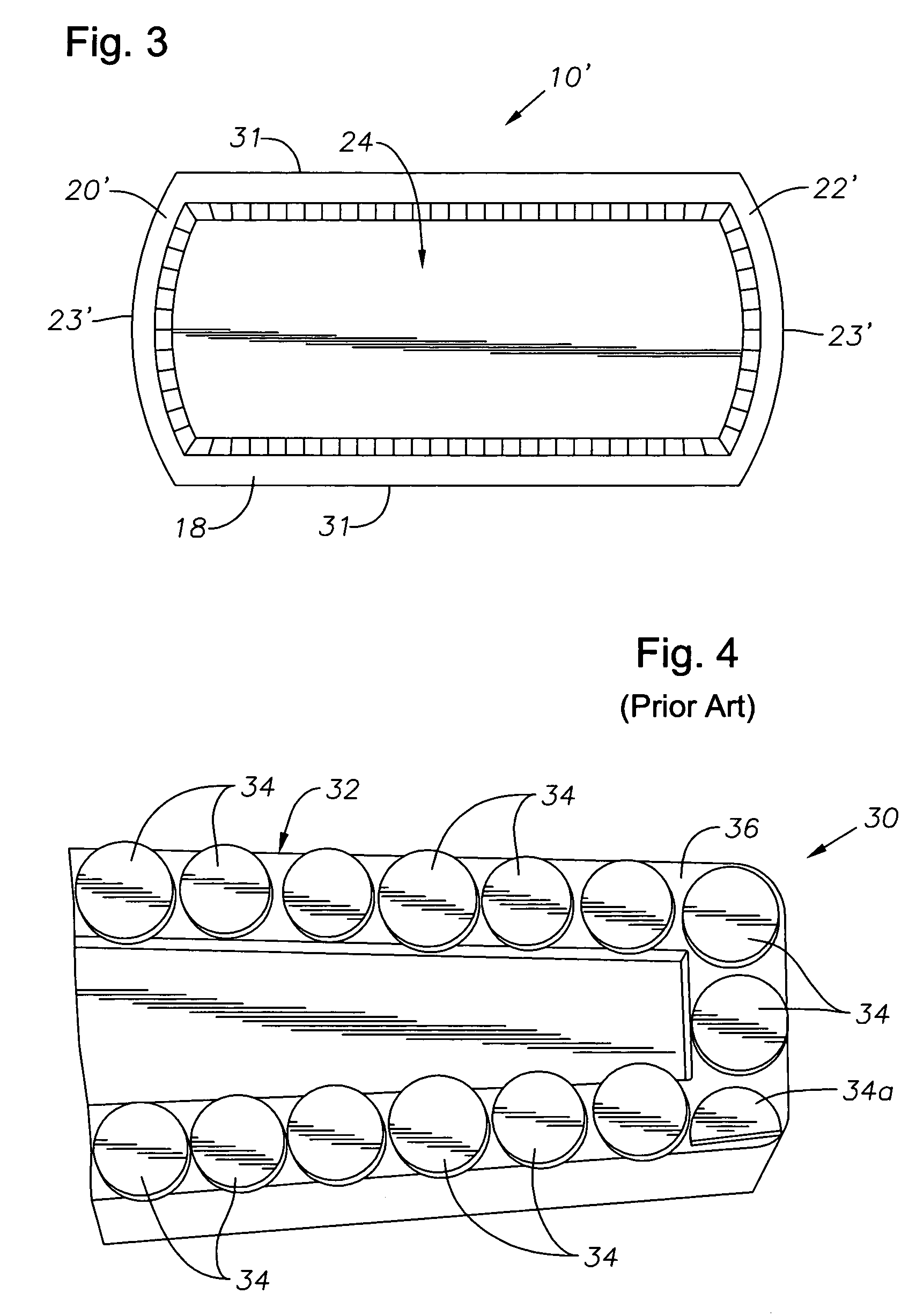Cutters for downhole cutting devices
a cutting device and downhole technology, applied in the direction of earthwork drilling, well accessories, borehole/well accessories, etc., can solve the problems of cutter loosening, cutter breaking off, cutters may become loose, etc., and achieve the effect of less interstitial space and increased bond area
- Summary
- Abstract
- Description
- Claims
- Application Information
AI Technical Summary
Benefits of technology
Problems solved by technology
Method used
Image
Examples
Embodiment Construction
[0018]FIGS. 1 and 2 depict an exemplary cutter 10 that is constructed in accordance with the present invention. The cutter 10 has a body 12 that is preferably formed of hardened carbide. However, the cutter 10 might also be formed of PDC, as is known in the art, or another substance suitable for use in downhole cutting. The body 12 features a cutting face 14 and a sidewall 16. Preferably, the cutter 10 features a raised chip-breaking edge 18 that is located proximate the outer circumference of the cutting face 14. When considered from the plan view offered by FIG. 2, the body 12 of the cutter 10 is generally made up of three sections: two end sections 20, 22 with end walls 23 that are semi-circular in shape, and a generally rectangular central section 24 that interconnects the two end sections 20, 22 to result in a rounded, rectangular “lozenge” shape for the cutter 10.
[0019]FIG. 2 also illustrates the currently preferred dimensions for the cutter 10. The cutter 10 has an overall le...
PUM
 Login to View More
Login to View More Abstract
Description
Claims
Application Information
 Login to View More
Login to View More - R&D
- Intellectual Property
- Life Sciences
- Materials
- Tech Scout
- Unparalleled Data Quality
- Higher Quality Content
- 60% Fewer Hallucinations
Browse by: Latest US Patents, China's latest patents, Technical Efficacy Thesaurus, Application Domain, Technology Topic, Popular Technical Reports.
© 2025 PatSnap. All rights reserved.Legal|Privacy policy|Modern Slavery Act Transparency Statement|Sitemap|About US| Contact US: help@patsnap.com



